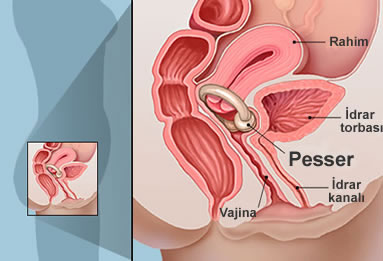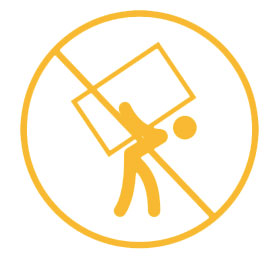When we think of the pelvic organs, the uterus comes to mind first. It is a pear-shaped organ and borders the bladder in front and the rectum behind.

When the muscles and ligaments in the abdomen and pelvis become slack, the uterus slips down and begins to protrude. Normally, the uterus pulls the bladder and rectum along with it. When the bladder protrudes, it is called a “cystocele,” and when the rectum protrudes and herniates, it is called a “rectocele.” This prolapse can be observed in women of any age.
Which conditions pose a risk for uterine prolapse?
- Pregnancy
- Strain (excessive pushing) or trauma during labor
- Multiple births
- Previous births with large babies
- Obesity
- Advanced age
- Chronic constipation
- Diseases that can cause chronic cough, such as asthma, COPD
- Repeated heavy lifting
- History of pelvic area surgery
- Diseases of connective tissue
What are the symptoms of uterine prolapse?
In most women, prolapse causes no symptoms. However, as the disease progresses, patients begin to complain.
- Feeling of fullness, heaviness or pain in the pelvis or vagina
- Tightness in the vagina, protruding fullness
- Urinary incontinence with coughing, laughing, heavy lifting
- Being caught short suddenly
- Inability to urinate, or urination with manual intervention
- Problems with sexual intercourse
- Impaired bowel movements
- Feeling like sitting on a small ball
- Vaginal discharge or bleeding
How do you recognize uterine prolapse?
Uterine prolapse can be detected by a thorough examination. Occasionally, the affected person may even notice the prolapse or protrusion herself.
How is uterine prolapse treated?
Treatment is not necessary for patients who have no symptoms or discomfort. However, there are the following treatment options for patients with symptoms.
- Pelvic floor muscle exercises (8-12 weeks)
- Pesser application
- Surgery

Pesser application ↑
What can I do to prevent prolapse?
- If you are overweight, you should lose weight.
- If you smoke, you should quit.
- You can do pelvic floor muscle exercises.
- You should be careful not to become constipated. Drink plenty of water, consume plenty of vegetables and fruits and fiber foods.
You should be careful not to lift heavy weights.





